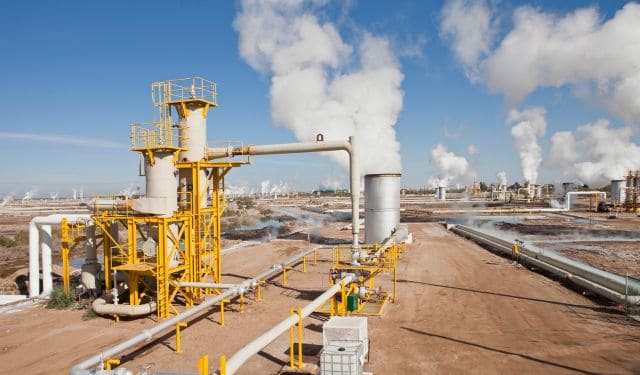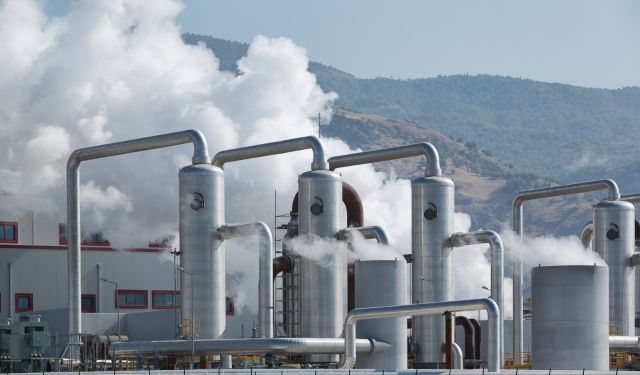Diverse Finance Sources: Large-scale geothermal projects require a mix of equity, debt, and grants, often involving private investors, development finance institutions (DFIs), and government programs.
Risk Mitigation is Critical: Tools like exploration risk insurance, Power Purchase Agreements (PPAs), and partial risk guarantees are essential to attract investors and lenders.
Strong Feasibility Studies: A robust feasibility study, including resource assessment and financial projections, is crucial to demonstrate project viability and secure financing.
Large-scale geothermal energy projects, such as geothermal power plants, are a cornerstone of the global transition to renewable energy.
However, securing financing for these projects—often requiring $100 million or more—can be complex.
This guide provides project owners and sponsors with actionable insights into geothermal financing, ensuring your project is bankable, investor-ready, and positioned for success.

Why Geothermal Financing is Unique
Geothermal projects are capital-intensive, with significant upfront costs for exploration, drilling, and infrastructure development.
Unlike other renewables, geothermal energy offers baseload power, making it highly valuable.
However, the exploration risks and long development timelines require a strategic approach to geothermal financing.1
Key Challenges in Geothermal Financing:
- High Upfront Costs: Exploration and drilling are capital-intensive and carry significant risks.
- Long Payback Periods: Geothermal projects often take years to become profitable.
- Perceived Risks: Investors may view geothermal projects as risky due to geological uncertainties and regulatory hurdles.

Key Steps to Secure Financing for Geothermal Projects
Securing financing for large-scale geothermal projects (e.g., $100 million or more) requires a strategic approach involving multiple stakeholders, thorough preparation, and leveraging various financial instruments. Here’s a step-by-step guide on how project owners and sponsors can seek financing for such projects:
1. Conduct a Robust Feasibility Study
A comprehensive feasibility study is the foundation of any successful geothermal project. It should include:
- Resource Assessment: Detailed geological, geophysical, and geochemical studies to confirm the geothermal resource potential.
- Technical and Economic Analysis: Evaluation of the project’s technical requirements, cost estimates, and financial projections.
- Environmental and Social Impact Assessments: Demonstrating compliance with regulations and addressing potential concerns.
A strong feasibility study not only reduces risks but also makes your project more attractive to investors and lenders.
2. Explore Diverse Geothermal Financing Options
Large-scale projects often require a mix of financing sources. Key options include:
- Equity Financing: Partner with private investors, energy companies, or joint ventures to share costs and risks.
- Debt Financing: Secure loans from commercial banks, development finance institutions (DFIs), or issue green bonds.
- Grants and Concessional Funding: Access government programs or international climate funds like the Green Climate Fund (GCF).
3. Mitigate Risks to Attract Investors
Geothermal projects face unique risks, particularly during the exploration phase. To reassure investors and lenders:
- Exploration Risk Insurance: Protect against the financial risks of unsuccessful drilling.1
- Power Purchase Agreements (PPAs): Secure long-term contracts with utilities or off-takers to ensure stable revenue.5
- Partial Risk Guarantees: Use guarantees from institutions like the World Bank to reduce lender risk.6
4. Highlight the Benefits of Geothermal Power
Emphasize the advantages of your geothermal power plant or geothermal energy project to attract investors:
- Environmental Benefits: Geothermal energy produces minimal emissions and provides reliable baseload power.2
- Economic and Social Benefits: Highlight job creation, local economic development, and energy security.4
5. Leverage Project Finance Structures
Project finance is a common approach for large-scale geothermal projects. Key features include:
- Non-Recourse or Limited-Recourse Financing: Repayment is based on the project’s cash flow, not the sponsor’s balance sheet.3
- Blended Finance: Combine concessional funding (e.g., grants or low-interest loans) with commercial financing to improve viability.7
Key Considerations:
- Transparency and Credibility: Provide clear, well-documented project plans and financial projections.
- Risk Allocation: Clearly define and allocate risks among stakeholders to make the project more attractive to financiers.
- Patience and Persistence: Securing financing for large-scale projects can take time, requiring persistence and flexibility.
By following these steps and leveraging a mix of financing sources, project owners and sponsors can successfully secure the necessary funding for large-scale geothermal projects.
Examples of Financing Models:
- Kenya’s Geothermal Development: The Kenyan government, with support from the World Bank and other international partners, has successfully developed geothermal resources in the Rift Valley.
- Iceland’s Geothermal Expansion: Public-private partnerships and government support have driven Iceland’s geothermal industry.
- The Philippines’ Geothermal Sector: A mix of private investment, government funding, and international aid has enabled large-scale geothermal development.
By leveraging a combination of these financing mechanisms, large-scale geothermal projects can overcome financial barriers and contribute to the global transition to renewable energy.
Conclusion
Securing financing for large-scale geothermal power plants and geothermal energy projects requires careful planning, a mix of funding sources, and a clear demonstration of the project’s viability and benefits.
By focusing on a robust feasibility study, diverse geothermal financing options, and effective risk mitigation, project owners and sponsors can attract the $100 million or more needed to bring their projects to life.
With the right strategy, geothermal energy can play a pivotal role in the global energy transition, providing sustainable, reliable power for generations to come.
REFERENCES:
- Stanford University, School of Earth, Energy and Environmental Sciences, Geothermal Modelling: Industry Standard Practices, retrieved from https://pangea.stanford.edu/ERE/pdf/IGAstandard/SGW/2022/Nugraha.pdf.
- International Renewable Energy Agency (IRENA), Geothermal Energy: Technology Brief, retrieved from https://www.irena.org/publications/2017/Mar/Geothermal-Energy-Technology-Brief.
- World Bank, Geothermal Handbook: Planning and Financing Power Generation, retrieved from https://www.worldbank.org/en/topic/energy/publication/geothermal-handbook.
- United Nations Environment Programme (UNEP), Geothermal Energy and Environmental Impact, retrieved from https://www.unep.org/resources/report/geothermal-energy-and-environmental-impact.
- International Finance Corporation (IFC), Scaling Up Geothermal Energy: Risk Mitigation and Financing Strategies, retrieved from https://www.ifc.org/wps/wcm/connect/publications_ext_content/ifc_external_publication_site/publications_listing_page/scaling-up-geothermal-energy.
- Green Climate Fund (GCF), Financing Geothermal Projects in Developing Countries, retrieved from https://www.greenclimate.fund/publications/geothermal-financing.
- BloombergNEF, Blended Finance for Renewable Energy Projects, retrieved from https://about.bnef.com/blended-finance-renewable-energy/.


